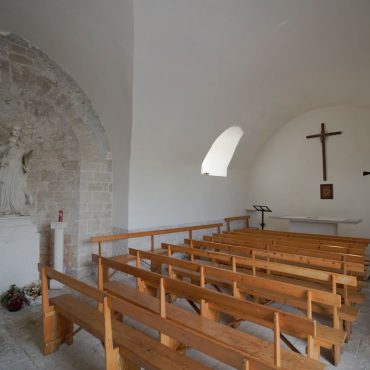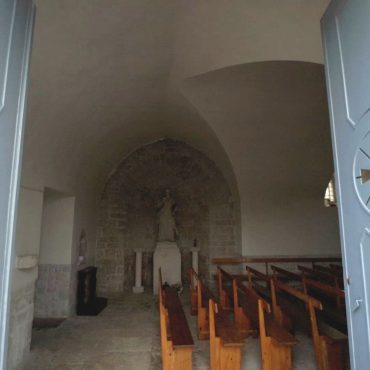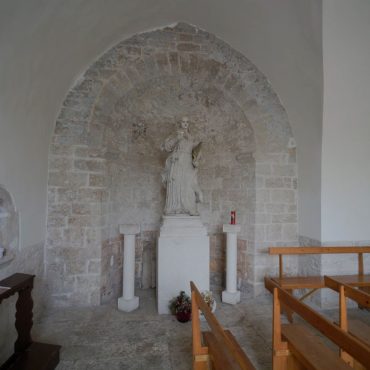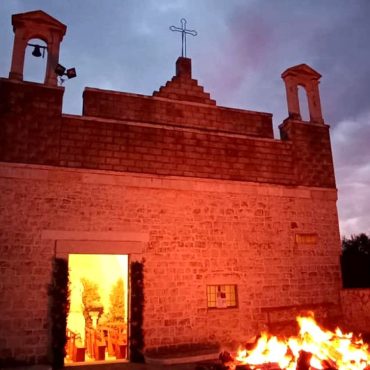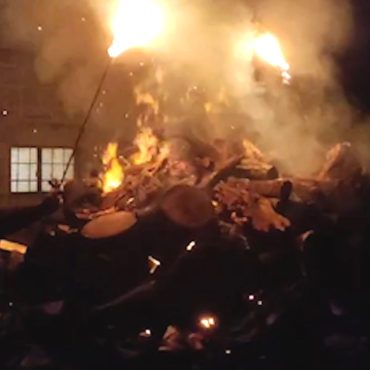
Chiesa S. Lucia
At dawn on 13th December, the morning silence is interrupted by the footsteps of worshippers approaching the small church which emerges from the dark like a beacon of faith. The preparations for the celebration begin at the first light of dawn. A group of men gather in the square in front of the church to light the bonfire. The wood is gathered and piled up in the days leading up to the festival and rapidly sets light, sending sparks into the dark sky. The light and shade created by the fire envelop those present in a mystical embrace while the flames dance in a symbolic victory of light over darkness.
It is powerful reminder of the promise of St. Lucy, saint of light. Lucy was martyred at the age of 21 during the persecution of Diocletian. Her story, passed down from generation to generation, tells of the courage of a young woman who defended her faith at the cost of her own life. Light is the central symbol of this ancient festival which coincides with the winter solstice when the days begin to get longer, symbolising the rebirth of nature and the hope of a good harvest.
The church of Santa Lucia in Marsico, thus named for its dependence on the Abbey of Marsico in Abruzzo, is one of the few rural buildings still open for worship. It was once the parish of a flourishing rural community, devastated by the plague in 1478 and further damaged by the wars between the French and the Spanish. The desertion of the nearby monastery of the Order of Friars Minor marked the beginning of its decline.
Today the small church is simple and bare, just a shadow of what it once was. It was altered several times and made up of three distinct buildings added gradually over the 17th and 18th centuries but now presents only part of the original structure. The façade was restored in 1952 with blocks of cement which create a marked contrast with the old stone and underlines the fusion between present and past.
Inside the church is an eighteenth century stone statue of St. Lucy, work of the sculptor Antonio Altieri. According to local historians, despite its modest and bare apearance today, the church was once imposing and richly decorated and its construction started before the year 1000 on the site of a pagan temple dedicated to Diana, goddess of daylight.


